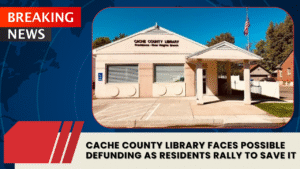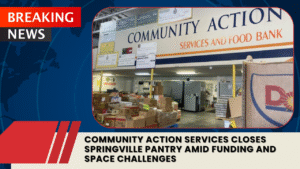The food pantry at the Salt Lake City Mission is facing an unprecedented surge in need as the ongoing federal government shutdown deepens its impact on local communities. According to pastor Shawn Clay, shelves are emptying faster than ever, and the rise in demand is putting significant pressure on the organization’s operations and volunteer base.
Surge in Client Numbers and Shrinking Donations
The Mission, which has supported the Salt Lake Valley for over three decades, reports that its pantry is serving dozens more households each week compared with the same period last year. Clay noted that many patrons include furloughed federal workers and families who had not previously sought assistance. He said the pantry will exhaust its existing food stock by early next week if donations and supply shipments do not increase.
The ripple effect of the shutdown is being felt across the region. As reported by other nonprofits, including the Utah Food Bank, volunteer numbers are down and donation levels have fallen concurrently with growing need. One community leader described the current demand as “historic” in the Mission’s 35-year history.
| Statistic | Current Level |
|---|---|
| Weekly increase in households served | “Hundreds more than last year” |
| Major client groups now served | Federal workers, new demographics |
| Pantry items flagged as most needed | Canned meats, boxed meals, winter gear |
| Volunteer hours | Reduced due to some donors deferring |
As Clay explained, the challenge is not just supplying food but maintaining staffing and logistics to handle the growing volume. The Mission’s ability to distribute thousands of pounds of food each week is being tested by tight supplies and a shrinking donation pipeline.
Ask for Community Support and Broader Implications
Pastor Clay is calling on Utah residents and businesses to increase donations—particularly of protein-rich items such as canned meats and boxed meals—as well as warm winter clothing and jackets. He emphasized that the rise in need extends beyond typical clients: “We’re seeing cars we wouldn’t expect—Mercedes, SUVs—just people who are now struggling,” Clay said.
The shock to the food-assistance network reflects larger stressors: the shutdown, inflation in grocery prices, and slowing foundations giving less financial support. Experts warn that without community intervention, the strain may spur deeper social challenges. Organizations such as the United Way of the Great Salt Lake are preparing campaigns to anticipate heightened food insecurity, especially over the holiday season.
Meanwhile, local authorities underscore the pantry’s role in the region’s safety net. With federal food-aid programs delayed and more households turning to local nonprofits, the Mission’s ability to stay open and stocked could determine whether entire neighborhoods endure weeks of food shortage.
Future Outlook and How to Help
The current demand on the Mission’s pantry highlights the duration and depth of the relief gap caused by federal inaction. Officials at the Mission and partnering agencies expect that this winter may bring one of the most challenging periods yet for local food-security operations. They are urging Utahns to donate early, help with volunteer shifts, and amplify awareness on social media.
Residents who want to support the Mission can drop off items at the pantry’s downtown location, or participate in scheduled food-drive events listed on the Mission’s website. The organization plans to publish weekly supply updates so the community knows which items are most urgently needed.
The unprecedented demand at the Salt Lake City Mission’s food pantry signals a major strain on the region’s support systems. Without action, food-insecure families could face worsening conditions in the weeks ahead. Authorities, volunteers, and the community are now working to prevent the local relief system from becoming overwhelmed this holiday season.



